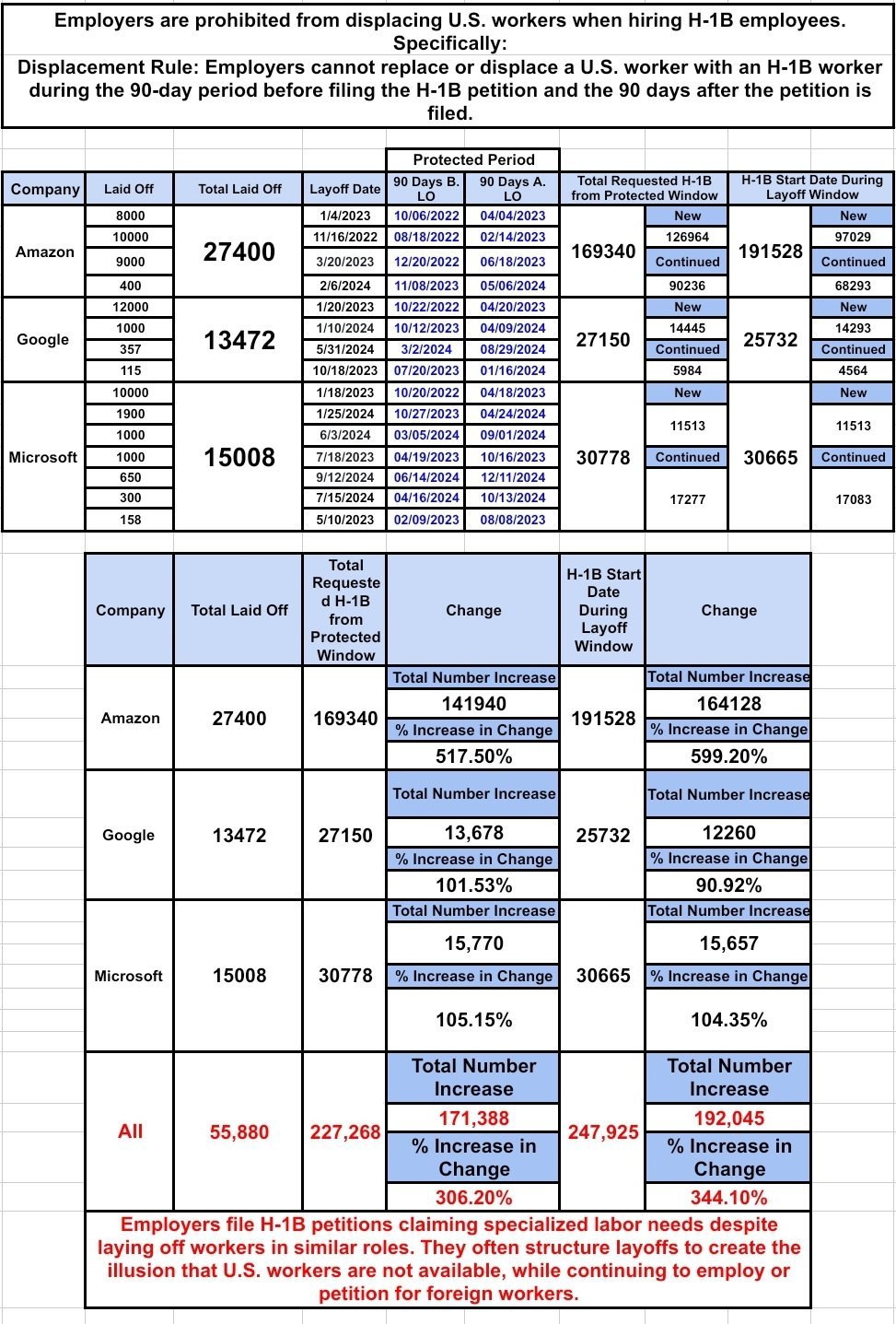A fierce debate has broken out between President-elect Donald J. Trump’s very recent tech industry supporters and his long-standing America First base. At the core of the disagreement is the subject of legal immigration—specifically, how Trump should handle so-called “high-skilled” foreign worker programs like the H1B visa.
One of the staunchest proponents of expanding the labor pool in this way is billionaire Elon Musk. In a Christmas Day post on X, Musk exclaimed America needs more than double the 160,000 semiconductor industry engineers said to be required by 2032.
“No, we need more like double that number yesterday! The number of people who are super talented engineers AND super motivated in the USA is far too low,” Musk wrote, adding: “Think of this like a pro sports team: if you want your TEAM to win the championship, you need to recruit top talent wherever they may be. That enables the whole TEAM to win.”
No, we need more like double that number yesterday!
The number of people who are super talented engineers AND super motivated in the USA is far too low.
Think of this like a pro sports team: if you want your TEAM to win the championship, you need to recruit top talent wherever…
— Elon Musk (@elonmusk) December 25, 2024
Additionally, Musk-allies and newly-named artificial intelligence (AI) advisors to President-elect Trump, David Sacks, and Sriram Krishnan, have both emerged as loud advocates for more legal immigration, expanding the high-skilled labor supply through changes to the H1B visa lottery.
A FLAWED MORALITY.
While bringing allegedly top talent from around the world to the United States sounds good on its face, this isn’t actually what H1B visas do.
The O-1 visa is actually the program used to grant legal work status to a foreign nation in the United States that is considered a ‘once-in-a-generation’ intellectual talent in a critical industrial sector.
H1B visas apply more to workers with skills that native-born Americans can easily learn through technical training programs or even collegiate classes. Think more programmer or mid-level software engineer than someone trained in semiconductor fabrication.
Even more concerning is that the big tech companies routinely abuse H1B visas as part of a scheme to suppress the wages of both American and foreign workers while maximizing shareholder profits.
Recently, the U.S. Department of Justice ramped up enforcement of visa rules after a pattern emerged in which tech companies artificially create the appearance of a domestic work shortage to increase their H1B allotments. This ultimately resulted in native-born workers being laid off and replaced two or threefold by cheaper foreign H1B workers.
H1Bs benefit tech companies on two key fronts:
- First, on average, H1B workers are paid significantly less than their American-born counterparts. This effectively puts downward pressure on wages across the industry, meaning American workers also get paid less;
- Secondly, because the visa is attached to the sponsor company, the foreign worker lacks the leverage afforded to American-born workers who can demand higher salaries by simply looking to take a job with a different firm.
…AND A COMPLETE SCAM.
Little data actually supports the tech industry’s claims of a worker shortage and a need to end H1B country caps. The data does suggest, however, that big tech is replacing qualified and capable American workers with cheaper foreign labor.
Between 2022 and 2024, Amazon laid off nearly 30,000 high-skilled workers. In the same period—though in compliance with federal law regarding when companies can request H1B visa workers—the online retail giant expanded its workforce by nearly 100,000 foreign workers.
Despite the layoffs, Amazon asked the federal government for a total allotment of 125,000 new H1B visa workers between 2022 and 2024, while they requested to retain around 90,000.
Similar trends are true for Google and Microsoft. Between 2022 and 2024, nearly 60,000 American workers were laid off among the three companies, while the companies increased their H1B employees by over 340 percent.
IS THERE A LABOR SHORTAGE?
Ultimately, the entire need for H1B workers is predicated on a supposed domestic worker shortage. According to the Bureau of Labor Statistics, the current native-born American labor force participation is around 63 percent. Meanwhile the foreign-born labor force participation is a stunning 68 percent.
Importantly, per the Wall Street Journal: “…census data show[s] immigrants who arrived since the start of 2020 are more than twice as likely to lack a high-school diploma as U.S.-born workers.”
In January 2007, the overall American labor force participation rate was around 66 percent, but has declined to 62.5 percent. When you examine the data overall, there is a strong suggestion that the high labor force participation among foreign-born workers is actually the cause of the lower rate of participation among native-born workers, pricing them out of the job market through downward pressure on wages.
Additionally, even the big tech companies’ own annual reports suggest they’re not suffering from any significant shortage in skilled labor. Elon Musk’s own Tesla slashed 14 percent of its workforce in 2024. Generally, a company struggling with fulfilling its labor needs might see a small need to cut workers if it cannot hire to keep up with demand, but far more common is the company hiring instead of laying off workers at all. You certainly wouldn’t see around a fifth of a corporation’s labor force being laid off amid a worker shortage.
In November of 2023, tech-giant Apple was sanctioned $25 million in fines and back pay due to American workers who were discriminated against in hiring—with the company essentially rigging its recruitment process in favor of foreign workers.
Conclusively, there are excellent arguments for a more fierce O1B recruiting policy, but the idea of expanding H1B visas for foreign workers should be a total non-starter for MAGA. Not only are the arguments for it untrue, but creating more competition for American workers is not even close to the ‘America First’ philosophy.




